tianjin cuisine places a heavy focus on seafood, due to tianjin's proximity to the sea. prominent menus include the eight great bowls (八大碗), a combination of eight mainly meat dishes. it can be further classified into several varieties, including the rough (粗), smooth (s: 细 / t: 细), and high (高). the four great stews (四大扒) refers actually to a very large number of stews, including chicken, duck, seafood, beef, and mutton.
tianjin also has several famous snack items. goubuli (狗不理包子) is a famous and traditional brand of baozi (steamed buns with filling) that is famous throughout china. guifaxiang (桂发祥麻花) is a traditional brand of mahua (twisted dough sticks). erduoyan (耳朵眼炸糕) is a traditional brand of fried rice cakes.
tianjin cuisine is derived from the native cooking styles of the tianjin region in china, and it is heavily influenced by beijing cuisine, due to the proximity of the two megalopolises. tianjin cuisine differs from beijing cuisine in the following ways:
tianjin cuisine is much more heavily concentrated on riverine fish/shrimps and seafoods due to its geographical location of on the coast.
for the same dish, the taste of tianjin cuisine is not as heavy as that of beijing cuisine, and this is often reflected in the lighter salty taste of tianjin cuisine.
though beijing cuisine and tianjin cuisine are both mainly salty in taste, in the cooking of tianjin cuisine, sugar is required more frequently and resulting in the unique taste of tianjin cuisine: there is a slight sweet taste in the salty taste.
tianjin cuisine utilizes mutton and lamb (food) more frequently due to the less frequently utilized pork in comparison to beijing cuisine, and in the event of traditional holidays, mutton / lamb (food) are nearly always prepared for holiday dishes.
a greater proportion of tianjin cuisine is consisted of rice in comparison to beijing cuisine.
the ways noodles are served in tianjin cuisine is different than that of beijing cuisine in that for tianjin cuisine, the vegetables and meat are served separately in beijing cuisine are together with the noodles in a single dish instead.
the most significant characteristic of tianjin cuisine is perhaps its healthy breakfast diet in comparison to its neighboring cuisines: although tianjin is right next to beijing, the rate of cancers associated with diet is far less in tianjin than beijing and researchers discovered the main reason was in the difference of breakfast:
the main ingredients of breakfasts in tianjin cuisine are tofu and soy milk, whereas a great number of the items in breakfasts of beijing cuisine are fried, which resulted in contributing to the occurrence of cancer.[citation needed]
another characteristic of tianjin cuisine is its utilization of tianjin preserved vegetable (天津冬菜), which is similar to the salt pickled vegetable, or yancai (腌菜) of guizhou cuisine, but the former takes much longer to prepare than the latter, usually half a year. another clear distinction between the two is that instead of having two separate steps of salt pickling and then fermentation, the salt pickling and fermentation is combined in a single step that takes a much longer time
chinese cabbage is mixed with salt and garlic together and then fermented, which creates the unique garlic flavor / taste and golden color. in order to preserve the unique taste, tianjin preserved vegetable is often used for soups, fishes, and stir fried and directly eaten.
怎样用英语介绍天津特色
tianjin is a beautiful city.now,let me tell you something about tianjin's famous food.eighteenth street fried dough twists is very delicious;go believe is also a kind yummy food.if you wang to take some photos about tianjin.i hope you go to panshan in jixian.panshan is a very nice and much famous place.and waterpark is a good place,too.do you know?tianjin has about 100 years history.representative place is ancient cultural street.do you wang to know more things about tianjin?please visit tianjin museum.it can tell you more stories about tianjin.中文:天津是一个美丽的城市,现在让我为你们介绍一下天津的著名小吃,十八街麻花是一种好吃的食物,狗不理包子也是一种好吃的食物。
如果你想拍一些关于天津的照片,你可以去蓟县的盘山,盘山是一个漂亮而且著名的地方,水上公园也是一个不错的景点。
你知道吗?天津有大约100年的历史,最著名的是食品街,你想了解天津更多的历史吗?到天津博物馆参观一下,它会让你知道更多关于天津的历史故事。
用英语介绍天津、的饮食文化
tianjin offers to a visitor not just traditional local snack, for which it is famous but also other cuisines from mainland china and the world. the port city is especially famous for sea-food as one can get fresh catch every day. the city is known for its food-streets, where you can find luxurious fine dining restaurants and at the same time mouth-watering snacks at the roadside kiosks. in fact it is a great idea to try good roadside kiosks serving world famous tianjin snacks. these street side small restaurants and vendors are particular favorites of the local people, who mostly prefer to have the mouth-watering snacks from these places....
法国美食介绍英文版
french food culture culture of french food french cuisine is extremely diverse, with only the chinese having similar variety in their food. this variety is supported by the french passion for good food in all its forms, france's extraordinary range of different geographies and climates which support the local production of all types of ingredients, and france's long and varied history. in many ways, an understanding of the culture of french food is an understanding of france itself.meals range from the very basic, such as the traditional baguette plus cheese plus inexpensive wine, to very elaborate affairs than can involve a dozen courses and different wines consumed over several hours. obviously, the latter type of dining is exceptional for most people. however, it is this more sophisticated dining which is typically found in "french restaurants" outside france, giving many foreigners the mistaken impression that french food is heavy and complicated. in fact, much of the french cuisine is fairly simple, relying on high quality fresh ingredients and loving preparation rather than complex recipes.it is common in much of france to take a two hour break for lunch, with many working parents (particularly in villages and smaller towns) returning home for lunch. in some areas, mainly in the south of france, even longer lunch breaks are taken. due to the long lunch break, businesses which close for this period typically reopen around 2pm or so and then stay open until about 7pm.regional influences on french food almost all the famous french dishes are regional specialities, some of which have become popular throughout france (such as coq au vin and foie gras) while others are mainly enjoyed in the regions in which they originate. although regional specialities are often offered throughout france, the quality of ingredients and preparation is often superior in their region of origin. each region, in addition to boasting local specialities, also has a general style of cooking and choice of ingredients. for example, in provence the food typically features olive oil, herbs and tomatoes. the evolution of regional cooking styles has been influenced by:local availability. the french, a nation of gourmets, know that the best food is made from local ingredients, which are fresher and of better quality than items which have been transported long distances. consequently, coastal regions (such as brittany and normandy, on the northwest coast of france) will favour sea fish and will use it more often and in more varied ways than inland areas. likewise, areas where fruit or herbs grow easily, will incorporate these into their local cuisine. neighbouring countries and immigration. areas of france which border on other countries have incorporated some of the cuisine of their neighbours. it is not surprising to find italian dishes near the italian border. more notably, the french region of alsace is similar to germany in its food (sauerkraut is popular) and wine, partly due to it currently bordering on germany and partly due to it having been part of germany at various points in its history (the border has moved back and forth with various wars). in parts of the south which have a large north african immigrant population one can enjoy the cuisine which they have imported from their original countries. history and economic conditions. the culture, lifestyle and economic conditions over a long period of time have formed the development of local food traditions. the rich meat dishes and cream sauces of burgundy are not only due to burgundian excellence in raising cattle, but in large part to the economic prosperity of this region over several centuries. on the other hand, mountain regions excel in firm cheeses, which allow food to be preserved over the long and difficult winters, and can be produced from mountain livestock which historically were the main means of support for many families in economically limited areas. in all parts of france one will find a range of dishes, both in restaurants and in homes, which extends far beyond the regional specialities. however, in much of france the regional influences in terms of ingredients and cooking are marked. the most available food and the best cooking tend to be those produced from local ingredients and using local recipes. therefore, the decision of where to visit or live in france tends to influence which types of food one will enjoy.the french mediterranean uses olive oil, herbs and tomatoes in many of its dishes. the cuisine of northwest france uses butter, soured cream (crème fraiche) and apples. the cuisine of northeast france (alsace, and to a lesser extent ...
急求各国美食的英文小介绍
1 south korea's kimchi practice :the world-renowned korean kimchi, korea has become basically the signs.韩国泡菜的韩国语读音:“听其” south korea's kimchi korean pronunciation: "listen to his"配料:大白菜、蒜、盐、鱼露、辣椒粉、糖。
ingredients: chinese cabbage, garlic, salt, fish sauce, chili powder, sugar.注意:鱼露是最必不可少的东西,也是为什么中国的酸辣泡菜和韩国泡菜最不同的地方,在韩国几乎家家自己做鱼露,中国人不吃这个东西,不过在大的超市里面有卖的,大约8-10元一瓶,多半是泰国的鱼露。
note: the sauce is the most essential thing is the reason why the chinese hot and sour kimchi and korean kimchi to the greatest difference, almost every family in south korea to do their own fish sauce, chinese people do not eat this thing, but in the big supermarkets inside there are sales of about 8-10 yuan a bottle, most of the fish sauce in thailand.准备材料: to prepare materials:1.白菜 1. cabbage白菜绿叶多,表皮薄,叶子密实,没有过多需要去除的外层叶子,看起来既干净又新鲜的为上选。
chinese cabbage leaves, thin sheet, leaf density, there is no need to remove too much of the outer leaves, it looks clean and fresh for the last election. 储藏白菜以有绿叶,看起来新鲜的白菜为宜,新产的白菜越大越好,秋季白菜以大小适中,结球程度好,重量重的为好。
storage empoasca have to cabbage, chinese cabbage fresh look is appropriate, the new production of the better chinese cabbage, chinese cabbage in the fall to size, the degree of cabbage, heavy weight for good. 白菜不仅含有丰富的维生素或矿物质,还含有各种具有多种药理作用的成分。
chinese cabbage is not only rich in vitamins or minerals, but also contain a variety of pharmacological effects with a variety of ingredients. 据学术论文发表,白菜中含有的methylmethionine是蛋氨酸的生物活性物质,对动脉硬化症具有疗效,而methylsysteinsulfoxid具有强化胆固醇的效果。
according to published academic papers, cabbage contains methylmethionine the met is the biological active substance, with effects on atherosclerosis, and methylsysteinsulfoxid have to strengthen the effectiveness of cholesterol.2. 萝卜 2. radish萝卜主要由水分组成,含有丰富的维生素c和消化酶—淀粉糖化酶素,若生吃,则有助于消化。
radish by water, rich in vitamin c and digestive enzymes - starch-glucoamylase, if raw, it helps digestion. 与萝卜心相比,维生素c主要分布在萝卜皮上,因此最好不要削皮,洗净后食用。
with the heart radish, vitamin c mainly in the luobu pi, so best not to peel, wash after eating. 萝卜以粗大而均匀、无疤痕、新鲜、色泽光润、肉质结实柔软、不太辣、有甜味的为上选。
the big carrot in uniform, no scars, fresh color guangrun, succulent fruit is soft, not too spicy, sweet as the last election.3.辣椒 3. pepper辣椒除胡萝卜素和维生素c之外,还含有多种成分。
in addition to the chili carotene and vitamin c, also contains a variety of ingredients. 辣椒素具有杀菌及除菌作用,能够促进唾液或胃液的分泌,促进消化。
capsaicin has a role in sterilization and disinfection, saliva or be able to promote the secretion of gastric juice, and promote digestion. 此外,还具有提高体内各种代谢作用。
in addition, it has to raise all kinds of body metabolism. 腌制泡菜时使用的辣椒面宜选用在阳光底下晒干的色泽鲜红、肉质厚、表皮光润的尖椒。
kimchi pickled pepper powder used in the selection should be dried in the sun under the bright red color, thick flesh, skin guangrun pepper's.4.大蒜 4. garlic大蒜的源产地是中亚地区,是属于百合科的葱类,蒜头在地下。
garlic is the source of origin in central asia, belongs to the liliaceae onion category, and garlic in the ground. 蒜头被淡褐色的蒜皮包围,内部有5~6个小蒜瓣。
the garlic was light brown skin surrounded by garlic, there are 5 to 6 small suanban. 普通农家栽培的代表性的土产品种是作为晚熟品种的六瓣蒜和多瓣蒜,以及长茎蒜。
the general cultivation of farm products represented as a late-maturing varieties are 6 species of garlic and garlic duoban, as well as the long stems and garlic. 制作泡菜时多使用味道辛辣的多瓣蒜,而制作咸蒜或使用蒜叶时多使用长茎蒜。
making more use of kimchi, when duo ban spicy garlic flavor, and the production of garlic salt or garlic when the leaves to make more use of long-stem garlic. 蒜中的主要刺激成分— 丙亚硫酸盐的杀菌力为碳酸的15倍,具有促进新陈代谢,镇痛、便秘、解毒等各种作用。
garlic in the main components of stimulus - c sulfite sterilization of the force carbonate for 15 times, with the promotion of metabolism, pain, constipation, such as the role of detoxification.5.葱 5. onions普通蔬菜是碱性,但葱含有丰富的硫磺,属于酸性食品。
...
法国美食英文简介!
france has a long culinary tradition. french cuisine nowadays is a result of centuries of research, elaboration and perfection. the french are proud of their cuisine. it is an integral part of their culture. thanks to the interest in the french for good food, the chefs have always been encouraged to elaborate new dishes to satisfy the most discriminating palate. the origins of the success of french cuisine can be attributed to catherine de medicis. when she became queen of france in 1533, she brought her own florentine chefs from italy. at this time, italian chefs were more experienced than french chefs. they introduced new dishes and sophisticated techniques that they adapted to french products. this gave french cooking a real boost, and the country's culinary influence has never stopped. french cuisine is sophisticated, varied, well balanced and based on local and high-quality products. france has established some regulations to protect product names from fraud, and guarantee the origin and product quality to the customer. to carry the prestigious label "appélation d'origine contr?lée" (a.o.c), products must comply with strict rules related to geography, varieties, method of fabrication and other criteria. unlike other countries, france does not have one national dish. because each region has its own local products and specialties, it is more appropriate to name regional dishes than a single one. here is a tour de france of the regional specialties: alsace alsace cuisine is strong and unique. it plays a major part on holidays and at family gatherings. alsatian cuisine is rich and copious. most alsatian dishes are not found in other parts of france. the most famous specialty is chouchroute, sauerkraut garnished with potatoes and a variety of meats such as sausage, pork or ham. the baeckaoffe is a one-of-a-kind alsatian fare baked with white wine usually in a traditional pottery dish only made in the village of soufflenheim. it's a stew comprised of pork, beef and lamb garnished with potatoes. there are many alsatian cakes and desserts, but the best is the kougelhopf, brioche pastry with butter, eggs, raisins, whole almonds marinated in kirsch. at christmas, bredles and gingerbreads decorate the tables of all alsatian families. bredles are cookies of different shapes flavoured with anise, cinnamon or almond. brittany brittany has excellent fresh seafood: coquilles-st-jacques (sea scallops), lobsters, langoustes, crabs, clams, shrimps, mussels, and oysters will all be found on the market stalls of brittany. this region is also famous for traditional crêperies serving wheat crêpes and buckwheat galettes accompanied with cider. la chandeleur, celebrated february 2nd, is the crêpes day in france. eating crêpes the day of la chandeleur will bring a year of happiness! burgundy a trip to france would not be complete without sampling escargots and frog's legs. burgundy snails are with the petis-gris snails, the two varieties eaten in france. escargots à la bourgignonne are stuffed with garlic butter. frog's legs are sautéed in butter with fine herbs. the boeuf bouguignon is another typical burgundy specialty. it's a beef stew marinated with burgundy red wine. the best-known regional product is mustard de dijon, secretly produced in the town of dijon. this strong mustard is used in vinaigrette, sauces and nicely compliments red meat. normandy normandy is renowned for the quality of its dairy products and apples. the region is home to the world-known camembert cheese. originally made more than 200 years ago in the lovely village of camembert, genuine camembert cheese is exclusively produced in normandy. apples also play an important part in the norman cuisine. they are not only used in desserts, but in alcohol and liquors. the region is famous for cider and a strong apple brandy called calvados. a mixture of cider and calvados, the pommeau de normandie is another regional beverage. in normandy, it is tradition to drink a glass of calvados in the middle of a meal to help digestion. this 200 century-old ritual is called trou normand. nowadays, a trou normand is still served in the middle of a meal, but as an apple sorbet soaked with calvados. provence the warm and sunny weather of provence produces high-quality fruits and vegetables whose delicious scents can be spotted in the open markets of southern france. the basic ingredients of proven?al cuisine are olive oil, garlic and herbes de provence. among the typical proven?al dishes, ratatouille is a vegetable stew made out of tomatoes, peppers, zucchinis, onions and olive oil and salade ni?oise, ...
用英语间单介绍一下天津特色,急用
tianjin simply known as jin is situated in the northeastern part of north china great plain, bordering the bohai sea in the east, leaning against the yuanshan mountain in the north, with its terrain traversing the haihe river through north and south. it has become the hub of communications of north china and the gateway of the capital city.tianjin is a municipality direct under the central government, as well as an opening city. it's situated in the eastern part of the north china plain, covering an area of 11,300 square km. and with a population of six million. it has a semi-humid continental climate in the warm temperate zone. with an annual average temperature of 12 degrees centigrade, and rainfall of 590 millimeters, it has 220 frost-free days per year. it's rich in petroleum, natural gas and sea salt along the coastal area. as one of china's biggest industrial centers, tianjin has built up an all-round industrial system with machinery, electronics, textiles, chemicals, metallurgy, foodstuff etc. as its mainstays. the production on a fairly large scale, of arts and crafts like hand-made carpets, yangliuqing's new year pictures printed from an engraved wood plate, zhang's painted clay figurines, kites etc. holds an important position in the country. tianjin has already achieved successes in the operation of its economic and technological development zone in the northeastern part of tanggu district, covering an area of 33 square km. tianjin is one of the most prosperous business areas as well as a distribution center for goods and materials in north china. it's also a key hub of land and sea communications. its port consisting of tianjin, tanggu and xingang harbours is an important chinese sea port, serving as the most convenient sea outlet for beijing, north china and northwest. the port accessible to ocean freighters of ten thousand tons class has opened more than 20 ocean shipping routes. tianjin has a well-developed road transport network, regular air-service to over 30 cities throughout the country, and inland water shipping, in addition to the pipelines for oil transport. tianjin is a famous historical city. the best known scenic spots and historical sites include ning garden, tianhou temple (temple of heavenly empress), dule temple in ji county, the great wall at the huangya pass, the panshan scenery area etc. efforts are being made to develop tianjin primarily into a financial center in north china, an international commercial city and a free port.
关于世界各地美食的英文介绍~~~!!
foods of the world1.chinese food chinese food varies by region. in northern china, mongolian influences are evident especially in the use of the fire pot. rice is not grown in the north, so noodles, soybeans and breads are used more often. in the mountainous regions to the west, spicy foods are more prevalent. these forms are szechuan and hunan. in the south, cantonese styles prevail. fresh fruit and seafood are popular. steamed rice is an important part of chinese food.the chinese believe that food can affect one's health. eating the proper food can help prevent disease as well as heal. in cantonese cooking, it is important that yin and yang foods and cooking methods are used in balance. by taking into consideration factors such as the individual's age, digestive system, absorbing power, and metabolism, optimal health is achieved. foods also symbolize different things. for example, clams represent wealth and prosperity.2..german food schmierkuchen schmierkuchen is a german-bohemian cottage cheese cake. using sugar, flour, shortening, and yeast, a pie crust is created and allowed to rise. the dough is then rolled flat and placed inside a pie plate, again being left to rise. when the crust is double in size, a mixture of cottage cheese and butter is placed in the crust and a garnish of fruit is smeared on top. most often the fruit of choice is prunes that have been pitted, mashed, and sweetened to taste. the cheesecake is then baked until it is golden brown and served with many summer meals.sauerkraut a dish known as "sour cabbage" probably does not sound appetizing, but many germans and german-americans find it rather enjoyable. to make sauerkraut, one thinly shreds cabbage which is then mixed with salt and placed into a large container (barrels were used originally). the container is covered with cheesecloth or muslin, then with a heavy lid to ensure that the cabbage is not exposed to the air. the cabbage should be left to ferment in its own juices for 3 to 6 weeks, although brine may need to be added if it is starting to dry out. after it has fermented for several weeks, the sauerkraut is then ready to be eaten. it is simmered on the stove and is often prepared with sausage or pork and accompanied by dumplings. 3..indian food spices are an important part of cooking in india. common spices are turmeric, cardamon, ginger, coriander, nutmeg and poppy seed, which are blended together. vegetable dishes are more common in india than in europe. part of the reason for this is the influence of hinduism. hindus are traditionally vegetarian. muslims have influenced the meat dishes of india. typical meats are "mughlai food, kabobs, rich kormas (curries) and nargisi koftas (meat-balls), the biryani (a layered rice and meat preparation), rogan josh, and preparations from the clay oven or tandoor like tandoori rotis and andoori chicken" 2 differences exist between the south and north parts of india. vegetable dishes are more common in the south, and rice is the staple food. in the north, rice is often substituted by breads.4..japanese food japanese food emphasizes pure, clean flavors, and spices are used rarely. due to influences from buddhism, meals are made up of foods with five different colors and flavors. the five flavors included are sweet, spicy, salty, bitter and sour. the five colors included are yellow, black, white, green, and red. meals are also meant to balance and create harmony between the artistic presentation of the food, the selection of the serving piece, and the taste of the food itself. meals are to be eaten slowly. noodles in soups and salads are common for lunch. hashi, or chopsticks are used to eat food in japan.some traditional japanese foods are, sushi, steamed vegetables, rice and green tea. fugu is a poisonous puffer fish that is a delicacy. when properly prepared, the toxins in fugu create a tingling effect after being eaten. foods are also prepared seasonally. in winter, mandarin oranges are common. cherry-blossom rice is prepared during spring and in september, abalone, cucumbers, and bamboo shoots are made.5.italian food typical foods vary by region in italy. there are geographical and climatic differences throughout italy that result in different products being available to cook with. italy has mountainous regions and plains. temperature also varies greatly, some regions are among the coldest in italy while others have mild climates along the mediterranean. pasta is typical in both areas, but the way the pasta is prepared varies. in the north, eggs are used when making the pasta, while in the south they are not. also, ...
用英语介绍四个美食城市
shenzhen is a modern city in south of china,it lies next to hong kong.shenzhen is very young and beautiful,too.there are many scenic spots here,for example,there are two famous beaches,named da meisha and xiao meisha.people always go swimming there.there are also a lot of mountain parks here like lianhua park and bao'an park,they are covered with green tall trees,grass and colorful flowers.welcome to shenzhen when you are free!
介绍各国特色美食的英语网站或英语介绍资料。
谢谢!
可能有点长你自己看看吧 tianjin is one of the four municipalities in china. its name means 'the place where the emperor crossed the river'. in recent years tianjin has received more and more attention from both tourists at home and abroad due to its numerous travel resources and rich history. it is no exaggeration to say that tianjin bears a splendid historical background. however, it was desecrated by foreign invaders long before the foundation of people's republic of china. tianjin was shared by nine countries: italy, germany, france, russia, great britain, austria, japan and belgium. this marked an extremely hard period for tianjin and her people because those imperialist countries left permanent marks in her body, most notable of which were thousands of villas. today those villas provide an exotic flavor to tianjin, enhancing the beauty of the entire city. blessed with variety of tourist attractions, tianjin is a good place to explore. the top ten attractions in tianjin, known as jinmen shijing, are gu wenhua jie, dagu emplacement, huangyaguan great wall, dule temple, haihe river, water park, panshan mountain, hotel street and food street, tianjin tv & radio tower and zhonghuan cailian. there are also many natural scenes of beauty as well as great historical events. getting in and out of the city is convenient because of the well-planned transportation system. if you want to come by water, there are a series of international and domestic sea routes in the port of tianjin, which is the biggest man-made port in china. if you plan to arrive by air, tianjin binhai international airport offers excellent service. planes have routes that reach most of the major cities in china and also cities in europe and america. of course, arriving in tianjin by land is another option, while trains or long-distance buses are yet another alternative. various hotels, guesthouses and hostels can also meet your different needs. in addition, there are all types of entertainment available to relax both your body and mind.


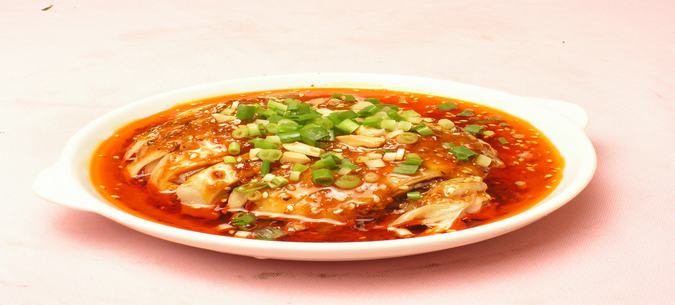
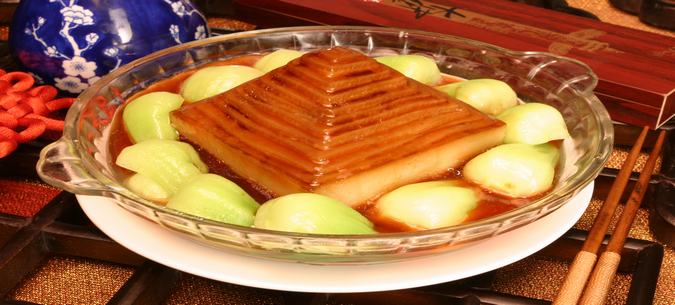
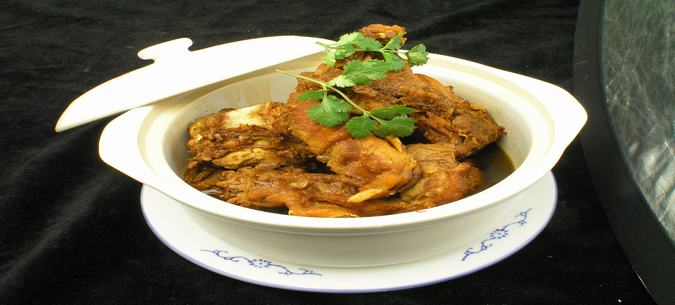
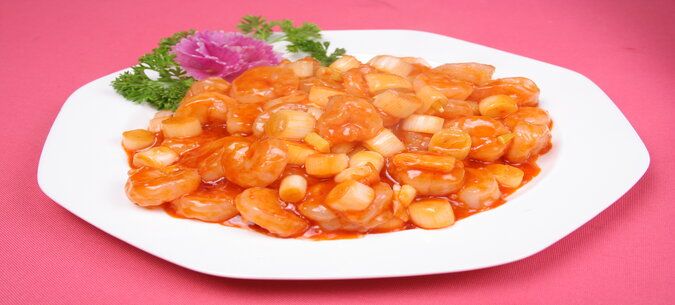
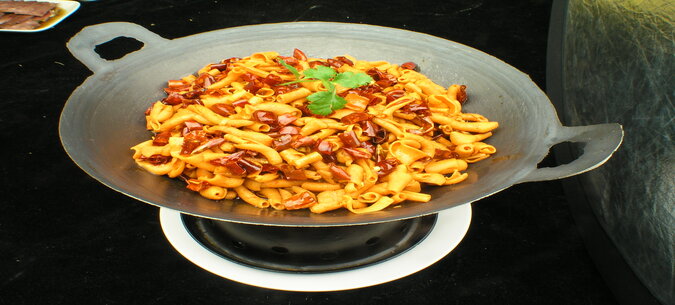
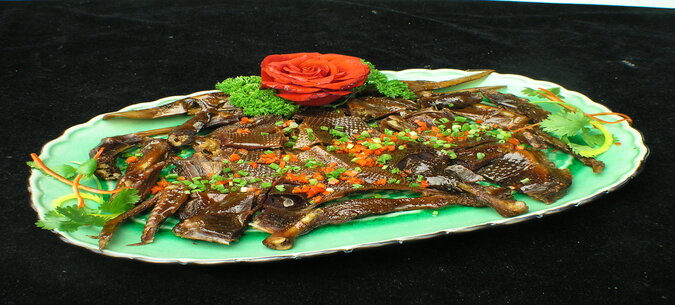
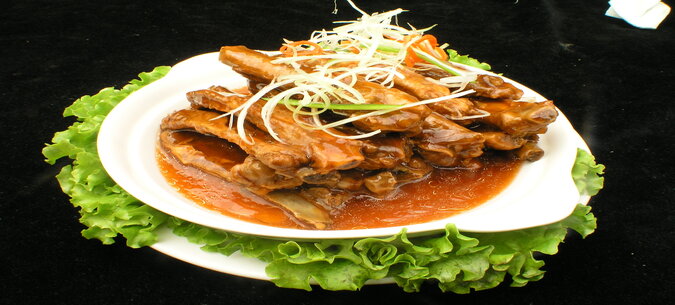
 via72376176
via72376176

